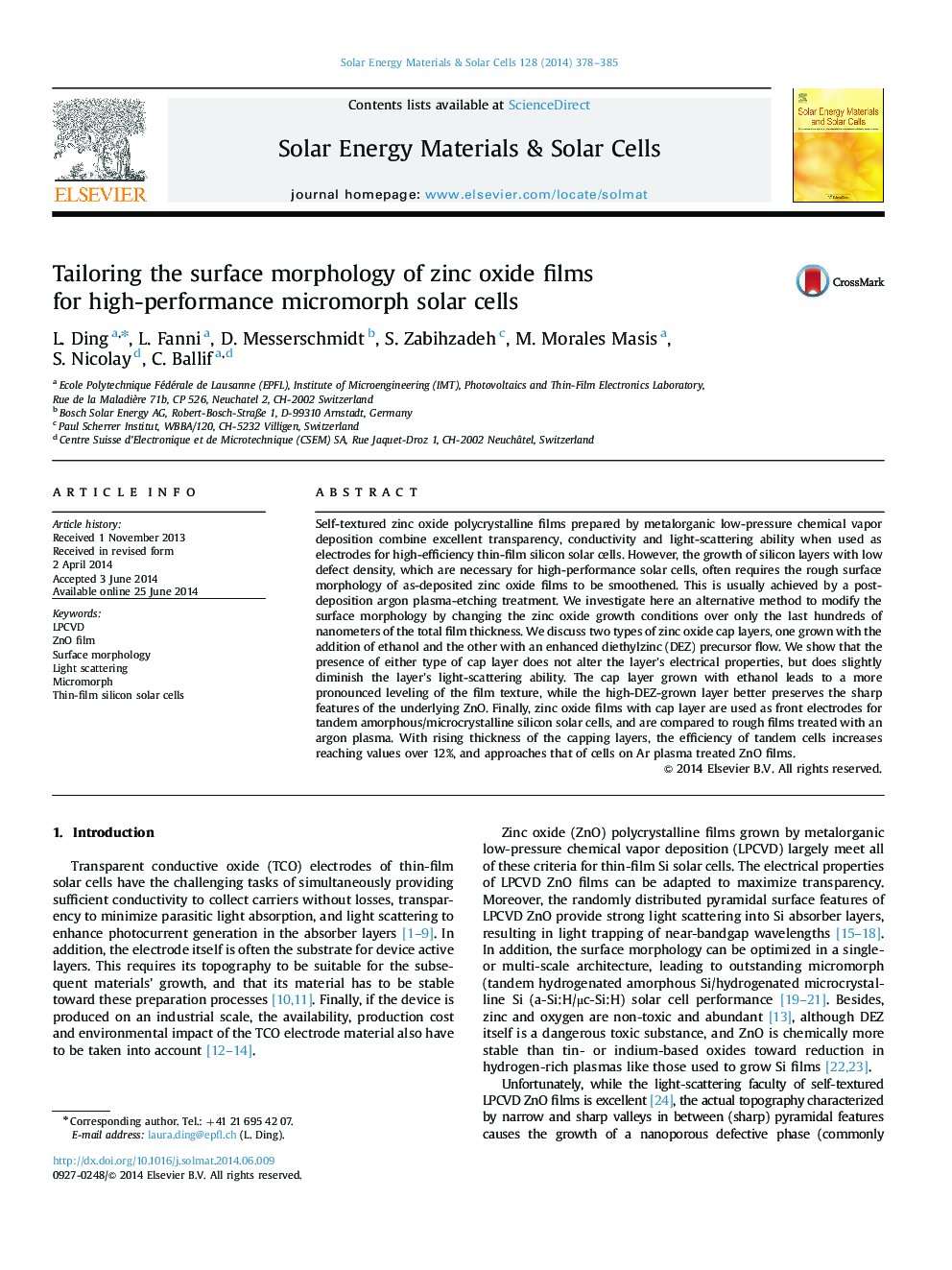| کد مقاله | کد نشریه | سال انتشار | مقاله انگلیسی | نسخه تمام متن |
|---|---|---|---|---|
| 78013 | 49312 | 2014 | 8 صفحه PDF | دانلود رایگان |
• We tune the surface roughness of LPCVD ZnO films without post-deposition treatment.
• We cap a rough bulk layer with a thin smoother layer grown with EtOH or high DEZ flow.
• The surface roughness and light scattering ability are decoupled from bulk electrical properties.
• Such bilayers are used as substrates for micromorph silicon solar cells.
• A gain in Voc and efficiency is demonstrated, compared to solar cells on single-layers.
Self-textured zinc oxide polycrystalline films prepared by metalorganic low-pressure chemical vapor deposition combine excellent transparency, conductivity and light-scattering ability when used as electrodes for high-efficiency thin-film silicon solar cells. However, the growth of silicon layers with low defect density, which are necessary for high-performance solar cells, often requires the rough surface morphology of as-deposited zinc oxide films to be smoothened. This is usually achieved by a post-deposition argon plasma-etching treatment. We investigate here an alternative method to modify the surface morphology by changing the zinc oxide growth conditions over only the last hundreds of nanometers of the total film thickness. We discuss two types of zinc oxide cap layers, one grown with the addition of ethanol and the other with an enhanced diethylzinc (DEZ) precursor flow. We show that the presence of either type of cap layer does not alter the layer׳s electrical properties, but does slightly diminish the layer׳s light-scattering ability. The cap layer grown with ethanol leads to a more pronounced leveling of the film texture, while the high-DEZ-grown layer better preserves the sharp features of the underlying ZnO. Finally, zinc oxide films with cap layer are used as front electrodes for tandem amorphous/microcrystalline silicon solar cells, and are compared to rough films treated with an argon plasma. With rising thickness of the capping layers, the efficiency of tandem cells increases reaching values over 12%, and approaches that of cells on Ar plasma treated ZnO films.
Journal: Solar Energy Materials and Solar Cells - Volume 128, September 2014, Pages 378–385
